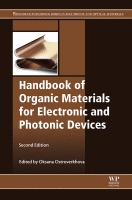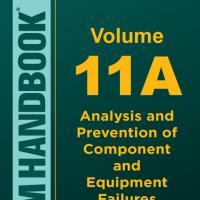by
Coal and Coalbed Gas: Future Directions and Opportunities, Second Edition introduces the latest in coal geology research and the engineering of gas extraction. Importantly, the second edition examines how, over the last 10 years, research has both changed focus and where it is conducted. This shift essentially depicts "a tale of two worlds"―one half (Western Europe, North America) moving away from coal and coalbed gas research and production towards cleaner energy resources, and the other half (Asia–Pacific region, Eastern Europe, South America) increasing both research and usage of coal. These changes are marked by a precipitous fall in coalbed gas production in North America; however, at the same time there has been a significant rise in coal and coalbed gas production in Australia, China, and India. The driver for higher production and its associated research is a quest for affordable energy and economic security that a large resource base brings to any country like Australia’s first large-scale coalbed gas to liquid natural gas projects supplying the demand for cleaner burning LNG to the Asian-Pacific region. Since the last edition of this book, global climate change policies have more forcibly emphasized the impact of methane from coal mines and placed these emissions equal to, or even more harmful than, CO2 emissions from fossil fuels in general. Governmental policies have prioritized capture, use, and storage of CO2, burning coal in new highly efficient low emission power plants, and gas pre-drainage of coal mines. The Organization for Economic Cooperation and Development (OECD) countries and China are also introducing new research into alternative, non-fuel uses for coal, such as carbon fibers, nanocarbons, graphene, soil amendments, and as an unconventional ore for critical elements.
New to this edition: Each chapter is substantially changed from the 1st edition including expanded and new literature citations and reviews, important new data and information, new features and materials, as well as re-organized and re-designed themes. Importantly, three new chapters cover global coal endowment and gas potential, groundwater systems related to coalbed gas production and biogenic gas generation as well as the changing landscape of coal and coalbed gas influenced by global climate change and net-zero carbon greenhouse gas emissions.
FOREWORD
When I reviewed the first edition of this book, my initial thought was, "Do we need another book on coal geology?" and then I read it and realised, "Yes, we need this book" and my students downloaded copies as soon as it was available. So now we come to 2023, and a lot has happened in the past decade. For a different reason we might ask if we still need this book, or even coal geoscientists and engineers, as the world aims for rapid decarbonisation of the energy sector and a reduction of coal as a feedstock for industrial resources, like steel manufacture.
Natural gas is earmarked as a transition fuel to enable the shift to renewables. In some basins, the source of that gas is directly from coalbed gas production or from conventional reservoirs that were charged by coal and terrestrial organic source rocks. Although the transition is escalating, there are projections that coal will remain part of our future, even after 2050, and can also provide alternative non-fuel resources (e.g., critical elements and carbon-based nanomaterials). Between now and then, we’d best ensure that we extract and utilise coal and coalbed gas as efficiently and safely as possible, that we mitigate any environmental and social impact of the process, and that we improve our certainty of predicting the behaviour of the material and material impacts. To do this we need to understand coal as a material and the inherent variability of its quality and behaviour as a source rock and host of coalbed gas. One can change the technologies but not the geological ground conditions or coal character of the targeted resource.
The authors have taken on this ambitious endeavour during their careers and have attempted to capture their knowledge gained from first-hand experience in countries around the world and comprehensive review of published material, within this book. At least three generations of knowledge are drawn upon here. Tim Moore was a student of both Romeo Flores and his supervisor John Ferm, who was the "Warrior of Gentleness" when it came to coal research, teaching, and supervision.
This book also reflects the broad and multidisciplinary aspects of coal geology and coal science and provides the tenets for one to understand different disciplines and how they interact to form an integrated view of the resource―technically, economically, and politically. Each chapter takes the reader through different concepts, first setting the scene by examining the status of coal and coalbed gas in a carbon-conscious world, then looking at the science behind coal as a source of gas and as a reservoir- in its own right. Further reading leads to learning about geological settings and the processes through time that led to present-day endowments around the globe and this theme continues throughout the book with detailed examples from different countries. Personally, I like the emphasis on the depositional environments that lead to peat accumulation and preservation―it’s all about the ingredients―which leads nicely into the world of coal macerals and minerals, and why they matter. Coalification and its role in changing the chemistry and material properties of coal is covered from a reservoir perspective, as is the role of biogenic processes. These have produced some of the enormous gas resources we exploit today and could also provide a future circular economy for neo-biogenic gas. The role of groundwater in this past and potentially future endeavour is presented, along with possible adverse effects where there is unexpected communication with regional and local aquifers and surface assets that detract from environmental and social licence. In addition to describing the geology and engineering technologies required to explore for, access, and utilise these resources, the book also provides insights into geostatistical and economic modelling for reserves estimation and challenges as reservoirs become more geologically and politically complex for extraction and alternatively, for injection and carbon sequestration.
The final chapters revisit and integrate concepts presented in the book in order to examine global gas production and the geographic shifts in production and research that have occurred over the past decade(s). The also show how government and the market play a role, and project future trends. The authors provide discussion points for the outlook of coal as a fuel feedstock in a carbon-constrained world and the ongoing search for options and alternative non-fuel uses of coal while highlighting the important role that coal and coalbed gas still play during the transition period and beyond.
There is much to learn from this book, which is based on decades of observing and interpreting patterns and trends in coal and coal-bearing basins. There is a growing trend towards using machine learning and artificial intelligence to find patterns in data and provide solutions. I’d suggest that domain intelligence, such as that provided in this book, is critical to supervising this process and is required for understanding and validating the outputs upon which many decisions are made and will continue to be made in the future.
So yes, we need this book and I invite you to read, learn, and form your own ideas. If you find any gaps―write about them.
Joan S. Esterle
Emeritus Professor
Vale Chair of Coal Geosciences
The University of Queensland, AustraliaMay 2023
This multidisciplinary volume covers everything from exploration of coalbed gas to its transport in pipelines and tankers, from the formation of peat to coal's utilization in thermoelectric power plants. In this book you will find topics on the local to global environmental and groundwater impacts from development of coal and coalbed gas as well as discussion of global climate change due to CO2 and CH4 emissions from power plants, coal mines, and peatlands. The future of organic-rich horizons such as coal is also examined and how innovative uses of solid carbon ore sourced from coal can contribute to a global net zero carbon emissions world."
Includes new case studies, field and laboratory data, model examples, and procedures from previous studies and latest investigations
Provides the background and basic science about coal and coalbed gas so that scientists, regulators, managers, and students have facts to make their own assessments of papers, policies, and the daily news
For those who wish to dig a bit deeper, each chapter is replete with new references, peer reviewed in journals of the highest quality
Accessible by a large multidisciplinary market by the world’s foremost experts on the topic
Publisher : Elsevier Science; 2nd edition (February 7, 2024)
Language : English
Paperback : 768 pages
ISBN-10 : 0323859372
ISBN-13 : 978-0323859370
![]()
1、本站所有分享材料(数据、资料)均为网友上传,如有侵犯您的任何权利,请您第一时间通过微信(lib99net)、QQ(24661067)、电话(17898078618)联系本站,本站将在24小时内回复您的诉求!谢谢!
2、本站所有商品,除特殊说明外,均为(电子版)Ebook,请购买分享内容前请务必注意。特殊商品有说明实物的,按照说明为准。
![]()

![]()
1、自动:在上方保障服务中标有自动发货的宝贝,拍下后,将会自动收到来自卖家的宝贝获取(下载)链接;
2、手动:未标有自动发货的的宝贝,拍下后,卖家会收到邮件、短信提醒,也可通过QQ或订单中的电话联系对方。
![]()
1、描述:书籍描述(含标题)与实际不一致的(例:描述PDF,实际为epub、缺页少页、版本不符等);
2、链接:部分图书会给出链接,直接链接到官网或者其他站点,以便于提示,如与给出不符等;
3、发货:手动发货书籍,在卖家未发货前,已申请退款的;
4、其他:如质量方面的硬性常规问题等。
注:经核实符合上述任一,均支持退款,但卖家予以积极解决问题则除外。交易中的商品,卖家无法对描述进行修改!
![]()
1、在未购买下前,双方在QQ上所商定的内容,亦可成为纠纷评判依据(商定与描述冲突时,商定为准);
2、在宝贝同时有网站演示与图片演示,且站演与图演不一致时,默认按图演作为纠纷评判依据(特别声明或有商定除外);
3、在没有"无任何正当退款依据"的前提下,写有"一旦售出,概不支持退款"等类似的声明,视为无效声明;
4、虽然交易产生纠纷的几率很小,但请尽量保留如聊天记录这样的重要信息,以防产生纠纷时便于网站工作人员介入快速处理。



 人工在线查找书籍,不要问我们有什么,告诉我们您需要什么即可...¥1.00
人工在线查找书籍,不要问我们有什么,告诉我们您需要什么即可...¥1.00 【PPT】Linear Algebra and Its Applica...¥0.1
【PPT】Linear Algebra and Its Applica...¥0.1 Delay-Adaptive Linear Control by Ya...¥29.99
Delay-Adaptive Linear Control by Ya...¥29.99 Handbook of Organic Materials for E...¥19.99
Handbook of Organic Materials for E...¥19.99 FinFET Devices for VLSI Circuits an...¥29.99
FinFET Devices for VLSI Circuits an...¥29.99 Positron Beams and Their Applications¥29.99
Positron Beams and Their Applications¥29.99 ASM Handbook Volume 11A Analysis an...¥420.00
ASM Handbook Volume 11A Analysis an...¥420.00 PETSc for Partial Differential Equa...¥29.99
PETSc for Partial Differential Equa...¥29.99 无机非金属材料热工设备-作 者 : 姜洪舟主编 2015第5版...¥14.99
无机非金属材料热工设备-作 者 : 姜洪舟主编 2015第5版...¥14.99 Product and Process Design Principl...¥9.99
Product and Process Design Principl...¥9.99